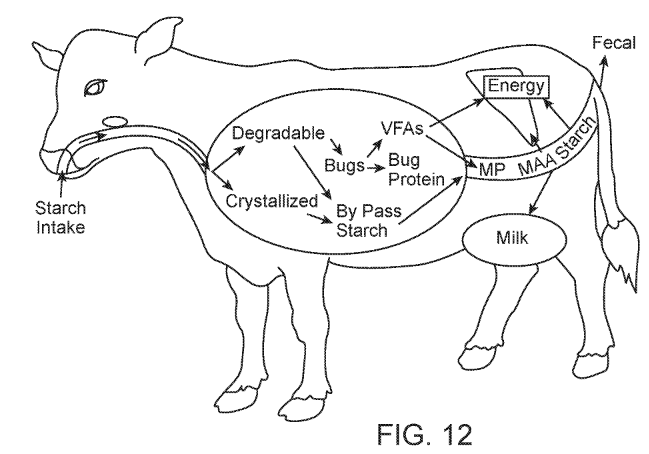
by Dennis Crouch
Symbiont Nourishment, LLC v. BJM Feed Ingredients, LLC, 1 CA-CV 21-0218 (Ariz. App. 1st Div. May perhaps 19, 2022)
Symbiont’s US Patent No. 9,446,094 covers a system of extruding corn into a resulting “hydrophilic, reduced-vitreous, gelatinous feedstuff” that is fed to dairy cattle. Apparently this system potential customers to improved digestion of the starch content. The inventor Mark Holt is also operator of Symbiont. Holt was part of forming two supplemental companies, BJM and Matrix and Symbiont licensed the know-how (including the patent) to these corporations. The arrangement included a amount of provisions — mainly a license with royalties for feed sold applying the method.

Issues fell aside in 2019 with Matrix dissolving and BJM terminating its license. BJM then commenced to do the job with an additional firm (Garner) to manufacture feed items. The ensuing lawsuit in Arizona point out court alleged: (1) breach of NDA (2) conversion of “assets, monies, and mental property” and (3) breach of fiduciary obligation.
The district court issued a preliminary injunction prohibiting BJM from offering its feed products utilizing the ‘094 patent or from soliciting other to do the similar. On appeal though, the Arizona Court docket of Appeals has vacated and remanded–holding that the district court erred by presuming irreparable harm due to patent infringement. The appellate courtroom famous the modify in regulation below eBay, but also went on to describe that Arizona Regulation “does not presume irreparable damage.” On remand, the district court docket will have to have to come to a decision regardless of whether the probable ongoing infringement brings about any hurt to the patentee that cannot be remedied by damages on your own.
The appellate courtroom also dealt with the issue of jurisdiction. All conditions “arising under” the U.S. patent rules are topic to special jurisdiction of the Federal Court docket technique. Listed here, nevertheless, the lawsuit asserts only state legislation statements of breach & conversion. Implementing Gunn v. Minton, 568 U.S. 251 (2013), the courtroom concluded that the fundamental patent regulation concerns have been not considerable plenty of to warrant Federal jurisdiction.
When issues of federal patent legislation may be embedded in Plaintiffs’ promises, the resolution of their statements rests ultimately on the application of Arizona regulation, not federal patent law. To triumph on counts one particular and two, Plaintiffs need to demonstrate the existence and validity of the licensing and nondisclosure agreements, that these agreements ruled Defendants’ perform, and that Defendants’ conduct violated the agreements. Likewise, Plaintiffs’ conversion declare turns on a demonstrating of Plaintiffs’ ownership or right to possession of selected property and Defendants’ wrongful interference with that home. At last, Plaintiffs’ fiduciary duty assert rests on Plaintiffs proving the existence of this kind of a duty and Defendants’ breach of that responsibility. Arizona legislation, not federal patent regulation, is dispositive of each of these claims.
. . . Even though the adjudication of Plaintiffs’ promises may well involve the court to identify whether Defendants applied a feed-production approach that infringed on Plaintiffs’ patented procedure, there is minor to advise that the point out court’s evaluation of this situation will impact uniformity in patent law. In truth, the embedded patent issues in this situation are actuality-certain and condition-specific and will have no precedential effect on federal courts or federal patent law normally. Nor do Plaintiffs’ promises raise novel patent problems. To the extent they raise patent concerns, they are types of standard infringement.
Slip Op. (inner citations removed).



